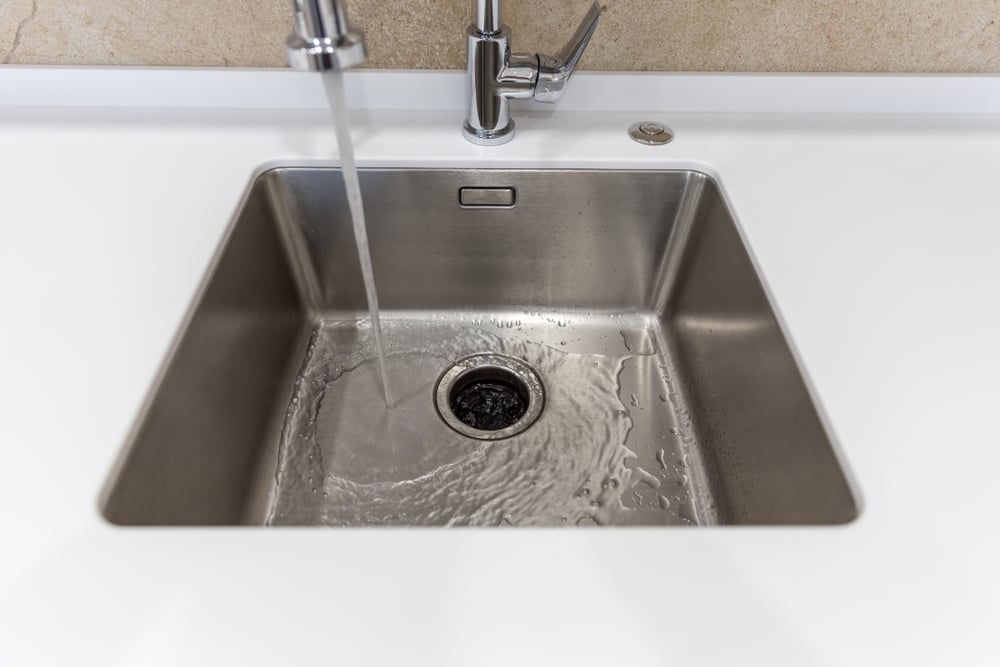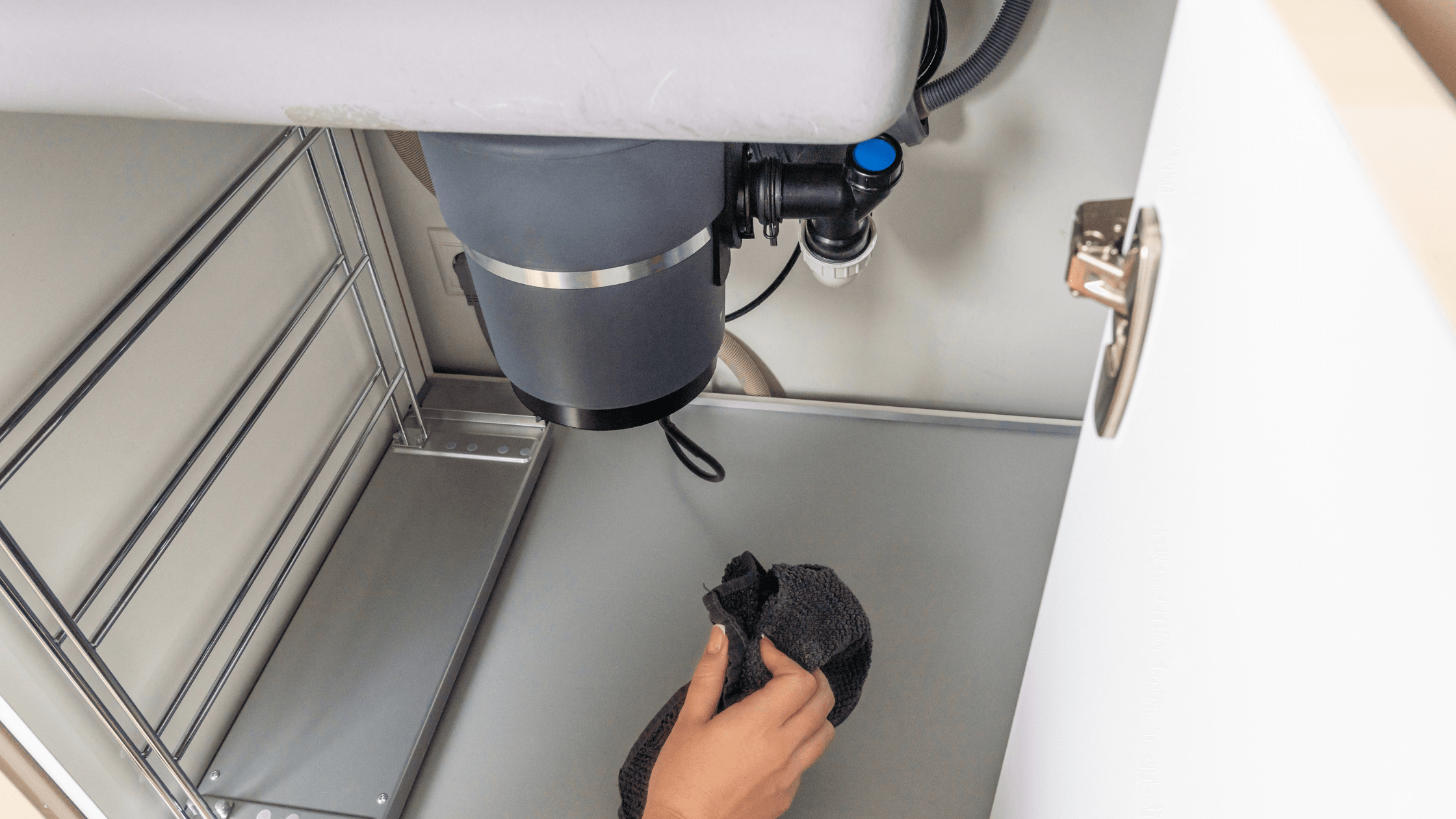Effortless Steps to Stop a Leak in Your Garbage Disposal
Effortless Steps to Stop a Leak in Your Garbage Disposal
Blog Article
What're your thoughts about Why Is ?

Waste disposal unit are important kitchen home appliances that aid in taking care of food waste efficiently. Nonetheless, a leaking waste disposal unit can be a frustrating and unpleasant problem to manage. Thankfully, many leakages can be taken care of easily with a couple of simple steps. In this write-up, we will certainly talk about how to deal with a leaking waste disposal unit effectively.
Introduction
Waste disposal unit are mounted under kitchen sinks and are made to shred food waste right into smaller pieces, enabling it to go through the pipes system conveniently. While these tools are normally reliable, leakages can take place over time because of damage, loosened connections, or damage to the system.
Typical Sources Of Leaks in Rubbish Disposals
Worn Seals and Gaskets
Seals and gaskets play a vital duty in protecting against water from dripping out of the waste disposal unit. With time, these components can degrade, resulting in leakages around the disposal system.
Loose Connections
The connections in between the waste disposal unit and the plumbing system can become loosened in time, triggering water to leakage out throughout procedure.
Splits or Openings in the Disposal Device
Physical damages to the garbage disposal, such as splits or holes in the housing, can also cause leaks.
Recognizing the Resource of the Leak
Before attempting to deal with a leaking waste disposal unit, it is essential to determine the resource of the leakage. This can normally be done through visual examination or by conducting basic tests.
Visual Examination
Evaluate the garbage disposal unit carefully for any type of indicators of water leak. Pay close attention to locations around seals, gaskets, and link points.
Evaluating for Leaks
One way to check for leakages is by running water through the disposal device and checking for any kind of noticeable signs of leak.
Tools and Materials Needed for Dealing With a Dripping Waste Disposal Unit
Before starting the repair process, gather the required tools and materials, including a screwdriver, flexible wrench, plumbing technician's putty, replacement seals or gaskets, and epoxy or patching product for fixing fractures or openings.
Step-by-Step Overview to Taking Care Of a Dripping Waste Disposal Unit
Switch off the Power
Prior to trying any kind of repairs, guarantee that the power to the garbage disposal unit is shut off to prevent the threat of electrical shock.
Find the Leak
Identify the precise location of the leak and identify the cause.
Tighten up Links
Utilize a wrench to tighten up any type of loosened links in between the disposal unit and the plumbing system.
Change Seals or Gaskets
If the leakage is because of used seals or gaskets, eliminate the old components and change them with brand-new ones.
Patching Fractures or Holes
For cracks or holes in the disposal system, usage epoxy or an ideal patching material to seal the broken location.
Examining the Waste Disposal Unit After Repair
As soon as the repair service is total, check the waste disposal unit by running water through it to make sure that the leakage has actually been dealt with.
Preventive Maintenance Tips to Avoid Future Leakages
To prevent future leaks, it is necessary to do routine maintenance on your waste disposal unit. This consists of maintaining it clean, avoiding putting non-food items or hard things down the disposal, and periodically looking for leakages or other problems.
Verdict
To conclude, dealing with a dripping waste disposal unit is a relatively straightforward process that can be completed with basic devices and materials. By adhering to the steps detailed in this article and practicing preventative maintenance, you can maintain your waste disposal unit in good working problem and avoid costly fixings in the future.
HERE’S HOW TO FIX YOUR GARBAGE DISPOSAL
WHAT TO DO IF SOMETHING IS STUCK IN YOUR GARBAGE DISPOSAL
If the impeller won’t turn, there’s probably something stuck in the disposal. It could be a steak bone or peach pit, although plumbers report pulling all sorts of inappropriate objects out of disposals, such as bottle caps or aluminum foil. Make sure power to the disposal is off, and look inside to see if you can see the source of the jam.
Never stick your fingers in a disposal. Pull out anything you see with tongs or pliers.
If the disposal still won’t work, it may be time to call a plumber or consider buying a new disposal. GEM Plumbing & Heating is here for all of your garbage disposal needs.
WHAT TO DO IF YOUR GARBAGE DISPOSAL DRAIN IS CLOGGED
Take everything out from underneath your sink and put a bucket or other container under your disposal to catch any water that drains out. Disconnect your disposal from the power supply. If it’s plugged into a wall outlet, unplug it. If it’s hardwired into an electrical box, go to the electrical panel and turn off the breaker for the disposal. Pour ¼ cup of baking soda into the drain, followed by ½ cup of white vinegar. Give the solution a few minutes to fizz and do its work. Look into the disposal with a flashlight to see if you can see an object that might be causing the clog. If you see it, remove it using tongs or pliers. MORE TIPS ON DEALING WITH A CLOGGED GARBAGE DISPOSAL
Never use drain cleaner in a garbage disposal. It can damage the plastic parts inside the disposal. You can also be splashed with the caustic liquid while working to clear the clog. Beware! Never stick your fingers into a garbage disposal. Trust us — not a good idea. In many instances, your dishwasher drains through your garbage disposal. This allows the disposal to grind any large food particles that may be drained out of your dishwasher. There are some jurisdictions, however, where the plumbing code prohibits such a connection. WHAT TO DO WHEN YOUR DISHWASHER DRAINS THROUGH THE DISPOSAL
Run some water in the sink so your plunger has at least a ½-inch of water to create a seal and plunge vigorously up and down several times. You may need to repeat this several times. Run hot water down the drain to clear any residue that remains.

I was made aware of that article on Garbage Disposal Leaking From Bottom through an acquaintance on a different site. Those who enjoyed our blog entry plz be sure to share it. Many thanks for taking the time to read it.
Request Free Estimate Report this page